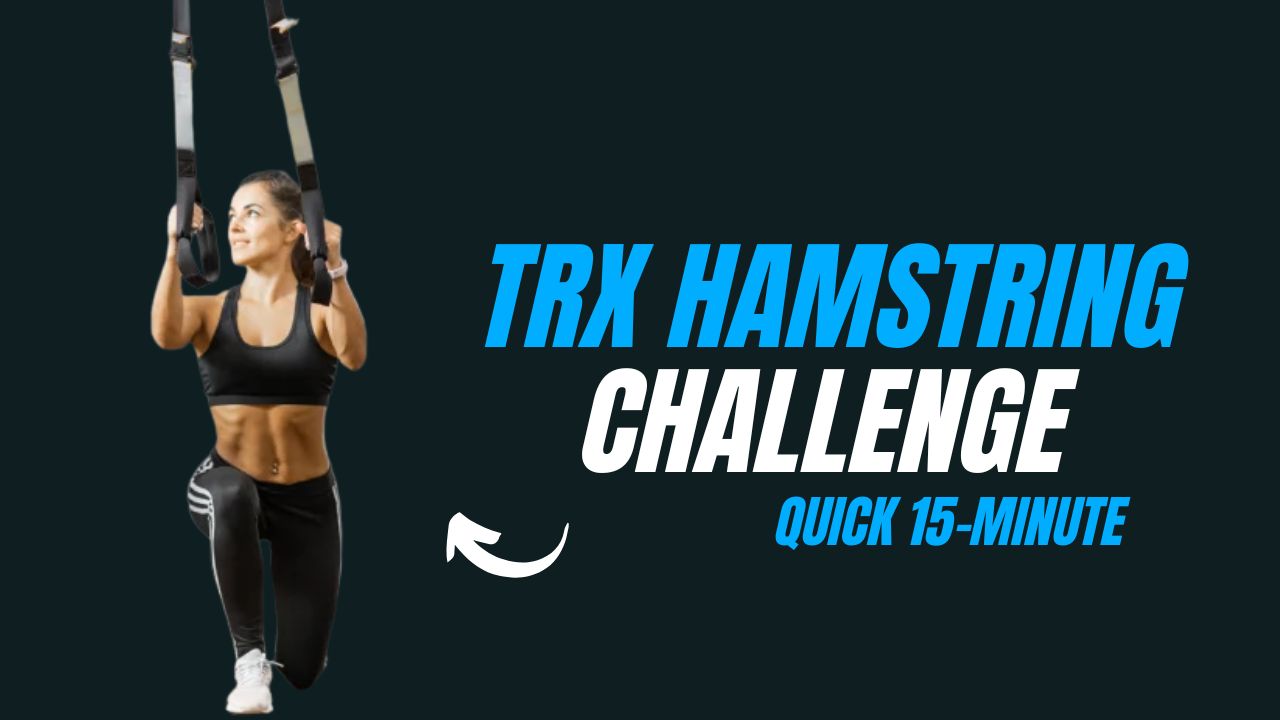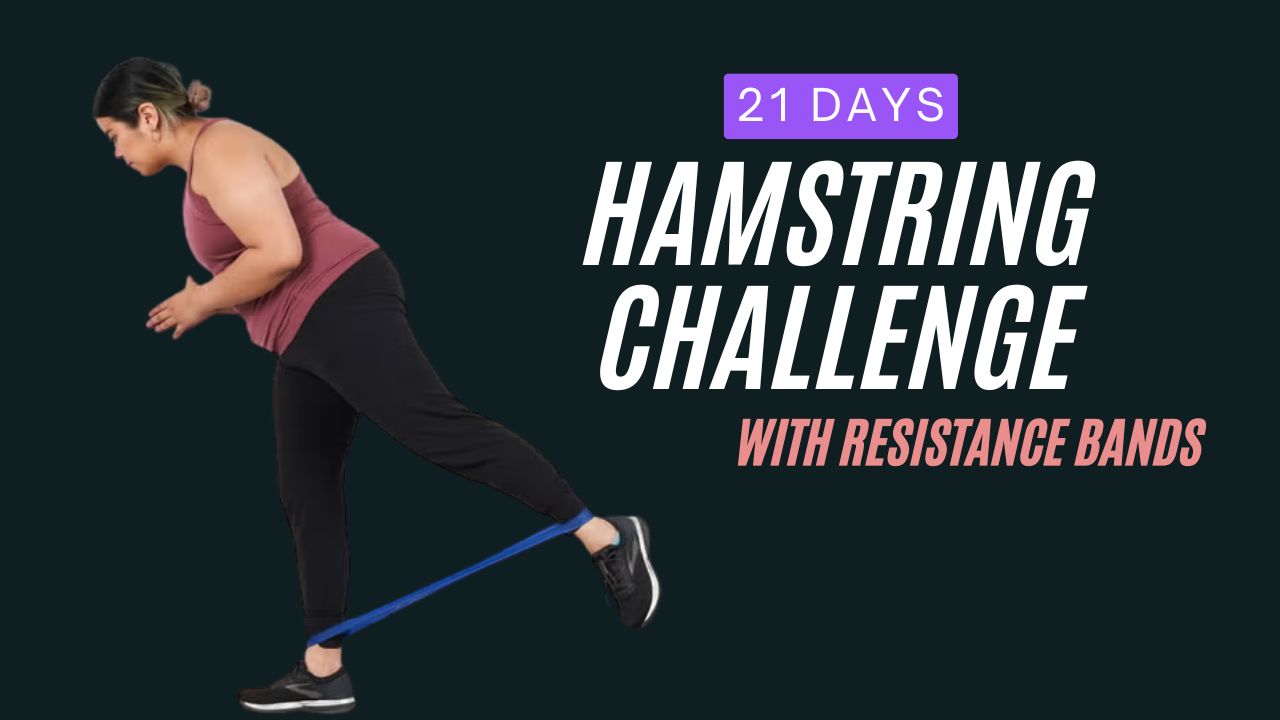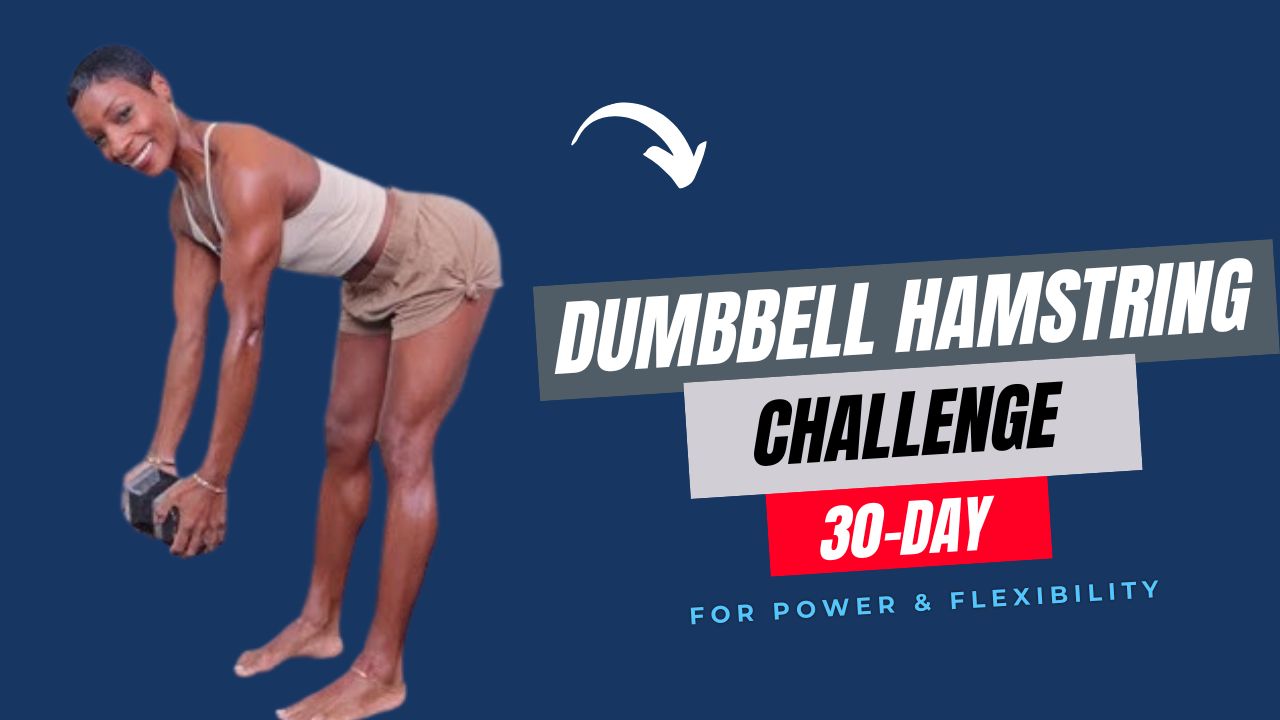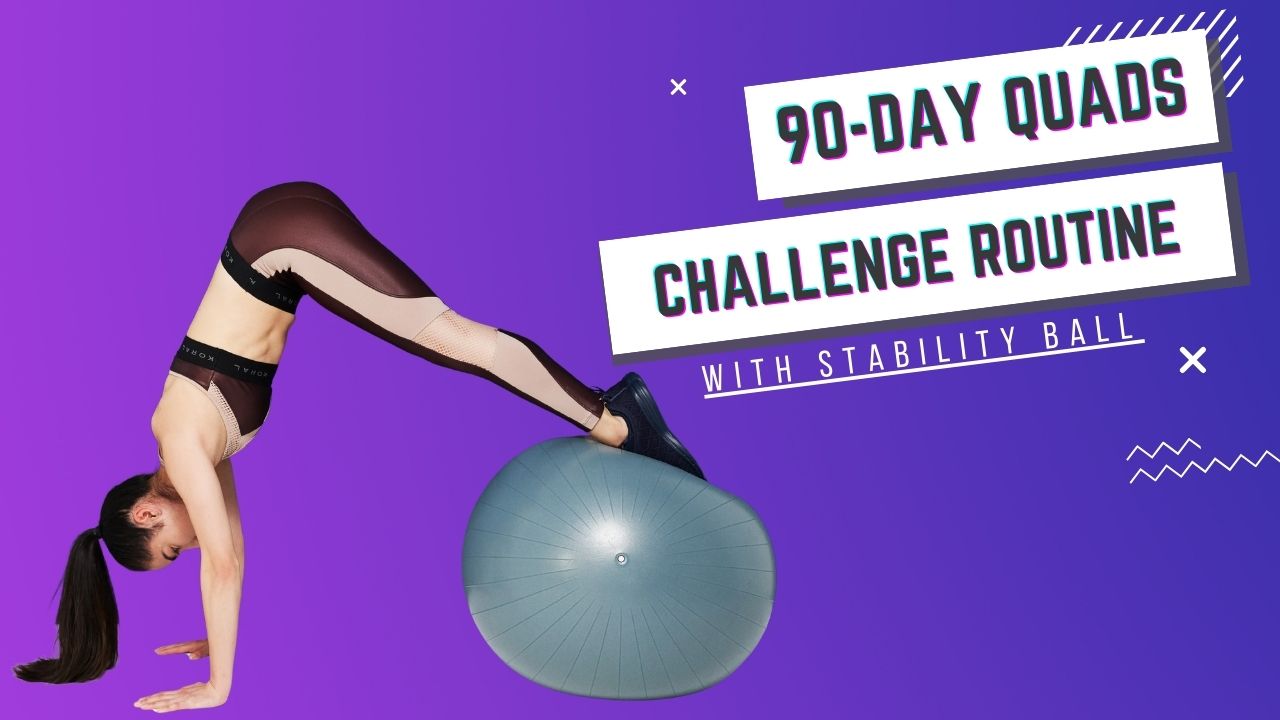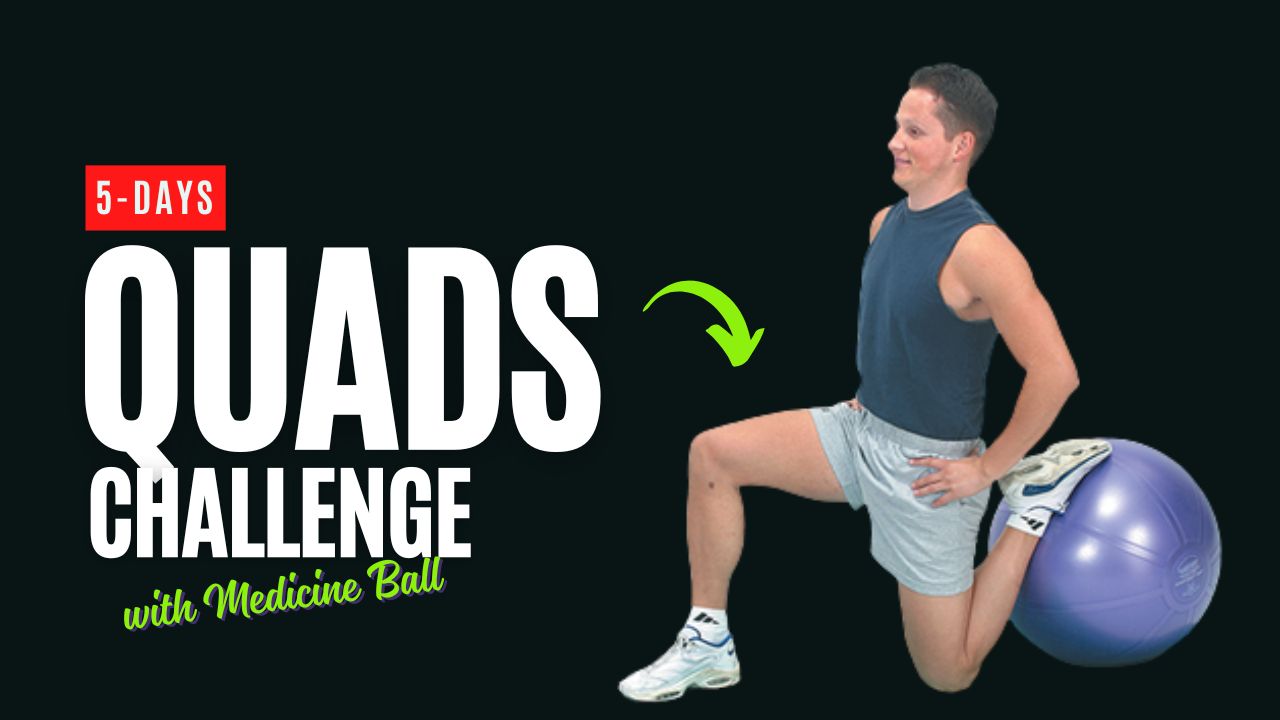Do you know that your glutes are not just about aesthetics? These muscles—the gluteus maximus, medius, and minimus—are some of the most powerful in the human body.
They play a critical role in posture, athletic performance, and even preventing back or knee pain. Yet, despite their importance, many people suffer from what experts call “gluteal amnesia,” a condition where the glutes forget how to activate properly due to prolonged sitting or inactivity.
That’s why targeted workouts like a 15-minute resistance band glute routine can make all the difference. With the right exercises, you can tone, strengthen, and re-activate your glutes, all from the comfort of your home. The best part? You only need a resistance band and a little dedication.
This guide will walk you through a carefully designed glute blast workout with resistance bands, giving you step-by-step “how to” instructions for each exercise.
Whether you’re looking to build strength, sculpt curves, or improve mobility, this routine is short, effective, and highly versatile.
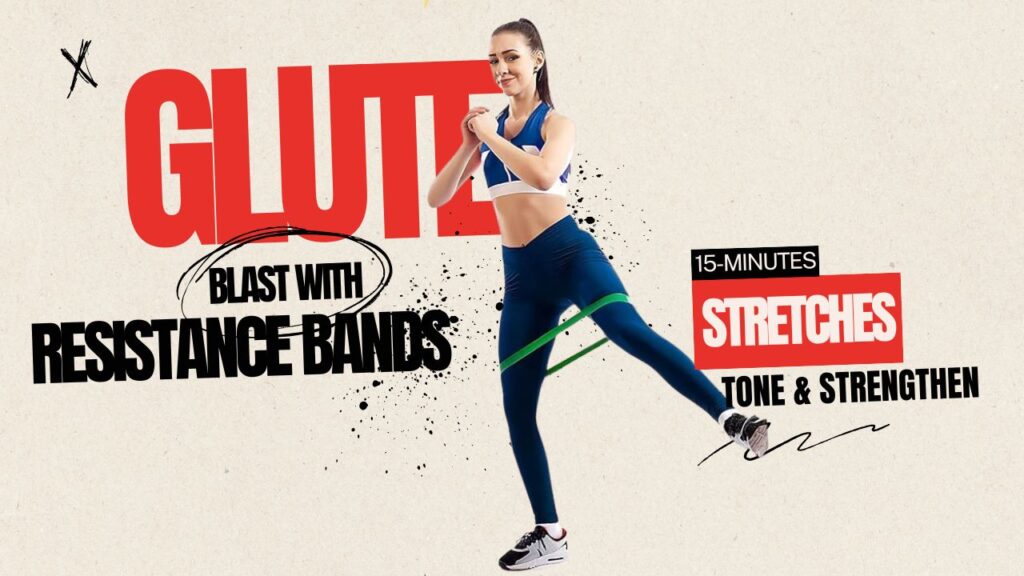
Table of Contents
Benefits of Training Glutes with Resistance Bands
Before jumping into the exercises, let’s understand why resistance bands are an excellent tool for glute workouts:
- Constant tension: Unlike free weights, bands keep muscles engaged throughout the movement.
- Joint-friendly: They reduce the risk of injury and are easier on joints compared to heavy lifting.
- Portable and affordable: Bands are easy to carry anywhere and far less expensive than gym equipment.
- Improved activation: Bands help target the smaller glute muscles that are often overlooked.
Myth Busted: Many believe you need heavy weights to grow or strengthen your glutes. The truth? When used correctly, resistance bands can be just as effective, especially for building shape and endurance.
What Can Happen After 30 Days of the 15-Minute Glute Blast
| Area of Improvement | Expected Changes |
|---|---|
| Glute Strength | Noticeably stronger glutes; easier hip extension and improved lower body power. |
| Muscle Tone | Firmer and more lifted glutes, with improved shape and definition. |
| Hip Stability | Better balance and stability during daily activities and exercises. |
| Posture | Enhanced pelvic alignment and reduced lower back strain. |
| Core Activation | Stronger core muscles engaged during glute exercises, improving overall stability. |
| Endurance | Increased stamina and ability to perform more reps or rounds with less fatigue. |
| Mind-Muscle Connection | Improved awareness and control over glute engagement in exercises. |
| Overall Lower Body Performance | Enhanced squats, lunges, running, and other functional movements. |
Do’s & Don’ts for the 15-Minute Glute Blast
| Do’s | Don’ts |
|---|---|
| Warm up for 3–5 minutes before starting to activate your muscles. | Don’t skip warming up—it increases risk of injury. |
| Focus on proper form and slow, controlled movements. | Don’t rush through exercises; momentum reduces effectiveness. |
| Keep tension on the resistance band throughout each movement. | Don’t let the band go slack during reps. |
| Squeeze glutes at the top of each exercise for maximum activation. | Don’t arch your lower back—glutes should do the work. |
| Perform 3–4 sessions per week, allowing recovery days. | Don’t overtrain your glutes daily without rest. |
| Progress gradually by increasing resistance, reps, or rounds. | Don’t jump to heavy resistance too soon—it can cause strain. |
| Pair workouts with proper nutrition and hydration. | Don’t rely solely on the workout for weight loss or muscle growth. |
| Maintain a mind-muscle connection during each rep. | Don’t neglect form thinking about speed or completing sets quickly. |
The 15-Minute Glute Blast: Exercises and How To Do Them
1. Banded Glute Bridges
Why it works: This exercise isolates the glutes and helps activate them, making it an excellent warm-up move.
How to:
- Lie on your back with knees bent and feet flat on the floor, hip-width apart. Place a resistance band just above your knees.
- Keep your arms at your sides with palms pressing into the floor.
- Push through your heels as you lift your hips toward the ceiling.
- At the top, squeeze your glutes while pushing your knees slightly outward to keep tension on the band.
- Lower back down slowly without letting your glutes fully rest on the ground.
Tip: Avoid arching your lower back; the power should come from your hips.
2. Resistance Band Squats
Why it works: Squats are a compound move, hitting the glutes, quads, and hamstrings while improving core strength.
How to:
- Step into the resistance band and position it just above your knees.
- Stand with feet shoulder-width apart and chest tall.
- Lower into a squat position by bending at your hips and knees, as if sitting into a chair.
- Push your knees outward against the band’s resistance to engage the glutes.
- Drive through your heels to return to standing.
Fact: Research shows that banded squats increase glute medius activation compared to regular squats.
3. Lateral Band Walks
Why it works: This move strengthens the glute medius, essential for hip stability and preventing knee injuries.
How to:
- Place the band above your knees or around your ankles (harder variation).
- Bend slightly at the hips and knees into a half-squat position.
- Step to the right with your right foot, then follow with your left foot without letting the band slack.
- Take 8–10 steps in one direction, then reverse.
Tip: Keep constant tension on the band—don’t let your feet come too close together.
4. Banded Kickbacks
Why it works: This exercise isolates the gluteus maximus for better muscle activation.
How to:
- Anchor the band to a sturdy object at ground level, looping the other end around your ankle.
- Stand tall and hold onto something for support.
- Keeping your leg straight, kick it backward against the band’s resistance.
- Squeeze your glutes at the top before slowly returning to start.
- Repeat on both sides.
Myth Check: Many people think kickbacks only “shape” the glutes. In reality, they also improve hip extension strength, which benefits running and athletic performance.
5. Clamshells with Resistance Band
Why it works: A powerful move to target the glute medius, often neglected in regular training.
How to:
- Lie on your side with knees bent at 90 degrees and the band above your knees.
- Keep feet together and slowly lift your top knee as high as possible, like a clamshell opening.
- Lower your knee back down with control.
- Complete all reps on one side before switching.
Tip: Don’t rotate your hips; focus on using your glutes to lift.
6. Fire Hydrants
Why it works: This exercise activates both the gluteus medius and minimus, improving hip mobility.
How to:
- Begin on all fours with the band above your knees.
- Keep your core tight and spine neutral.
- Lift one knee outward to the side at about a 45-degree angle, keeping your foot flexed.
- Lower back down without touching the ground completely.
- Repeat on both sides.
Fact: The name comes from the motion resembling a dog lifting its leg at a fire hydrant.
7. Banded Hip Thrusts
Why it works: A powerful glute-building move with maximum contraction at the top.
How to:
- Sit on the floor with your upper back against a bench or sturdy surface.
- Place the resistance band just above your knees.
- Roll a barbell pad or cushion under your hips if needed for comfort (optional).
- Drive through your heels as you lift your hips upward until your thighs are parallel to the ground.
- Push your knees outward against the band and squeeze your glutes at the top.
- Lower slowly and repeat.
Tip: Keep your chin tucked slightly to avoid lower back strain.
8. Standing Abductions
Why it works: A finishing move to burn out the glutes and improve hip strength.
How to:
- Loop the band around both ankles.
- Stand tall and hold onto a wall or chair for balance.
- Lift one leg out to the side while keeping your upper body still.
- Slowly return and repeat on the other side.
Fact: Abduction exercises improve balance and stability, especially beneficial for runners and athletes.
15-Minute Glute Blast Challenge (Routine Plan)
Here’s how you can combine the above exercises into a structured 15-minute workout routine. Perform the routine 3–4 times per week for best results.
Workout Structure:
- Duration: 15 minutes
- Equipment: Resistance band
- Format: Circuit (perform one set of each exercise, then repeat circuit 2–3 times depending on fitness level).
| Exercise | Reps/Duration | Rest |
|---|---|---|
| Banded Glute Bridges | 15 reps | 15s |
| Resistance Band Squats | 12–15 reps | 15s |
| Lateral Band Walks | 10 steps each side | 15s |
| Banded Kickbacks | 12 reps per leg | 15s |
| Clamshells | 12 reps per side | 15s |
| Fire Hydrants | 12 reps per side | 15s |
| Banded Hip Thrusts | 12–15 reps | 20s |
| Standing Abductions | 12 reps per side | 20s |
Total Time: ~15 minutes
Tips for Success
- Warm-up first: A few minutes of light cardio or dynamic stretches help activate muscles.
- Focus on form: Quality over quantity. Proper technique ensures better results and fewer injuries.
- Progress gradually: Use stronger bands over time or increase reps.
- Cool down: Finish with stretches targeting glutes, hamstrings, and lower back.
Conclusion: Your Glute Transformation Journey Starts Here
Stronger glutes don’t just enhance your physique—they also improve posture, athletic performance, and daily movement efficiency.
With this 15-minute resistance band glute blast, you’ve got a powerful yet simple workout that targets every part of your glute muscles in a short amount of time.
But remember, real transformation comes with consistency. Treat this workout as more than just a one-off session—it can become your foundation for long-term strength and tone.
Challenge Continuation Idea
Once you’ve completed this 15-minute glute blast for a few weeks, level up your challenge:
- Week 1–2: Perform the workout 3 times a week, sticking with the reps provided.
- Week 3–4: Increase resistance by using a stronger band and add one more circuit round (total 3 rounds).
- Week 5–6: Mix things up by adding variations like single-leg glute bridges, sumo band squats, or pulse reps for an extra burn.
- Beyond Week 6: Turn this into a 30-day Glute Challenge—track your progress weekly with photos, increased reps, or resistance upgrades to keep the muscles adapting and growing.
By gradually pushing your limits, this 15-minute routine won’t just be a quick burn—it will evolve into a progressive glute-strengthening program that keeps you motivated and results-driven.
Frequently Asked Questions (FAQs)
Can I really see results with just 15 minutes a day?
Yes. While longer workouts have their place, short and targeted resistance band routines can be highly effective. Consistency is key—doing this glute blast 3–4 times per week will build strength, improve tone, and enhance muscle activation over time.
Do I need a specific type of resistance band?
Loop resistance bands (also called mini bands) are best for glute workouts. They come in different strengths (light, medium, heavy). Beginners should start with light or medium, while advanced users can progress to heavy bands.
How long before I notice changes in my glutes?
Most people start to feel stronger within 2–3 weeks and notice visible results in about 4–6 weeks, provided they are consistent and pair the workout with good nutrition.
Can I do this glute workout every day?
It’s not necessary to train your glutes daily. Muscles need recovery to grow. Doing this workout 3–4 times per week with rest days in between is ideal.
What if I don’t feel my glutes working during the exercises?
This is common, especially if you’ve been sitting a lot. Focus on mind-muscle connection: squeeze your glutes during each movement, push your knees outward against the band, and move slowly with control.
Can beginners try this routine?
Absolutely. This workout is beginner-friendly. You can start with fewer reps or lighter resistance bands and increase intensity as you progress.
Do I need other workouts along with this?
Yes. While this routine targets the glutes effectively, a balanced fitness program should include core, upper body, and cardio training for overall strength and endurance.
Can resistance bands replace weights for glute training?
Resistance bands can be highly effective, especially for activation, toning, and shaping. However, if your goal is maximum muscle size and strength, combining bands with weighted exercises may give faster results.
Is this routine good for weight loss?
This workout strengthens and tones muscles, which boosts metabolism. For weight loss, pair this with a calorie-controlled diet and additional cardio workouts.





